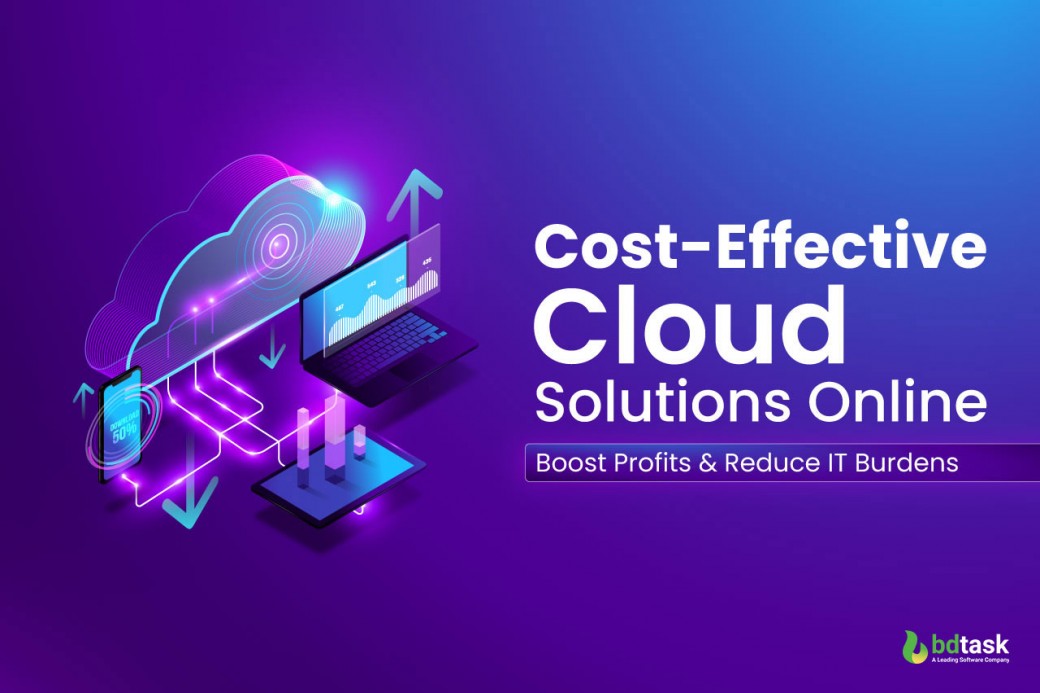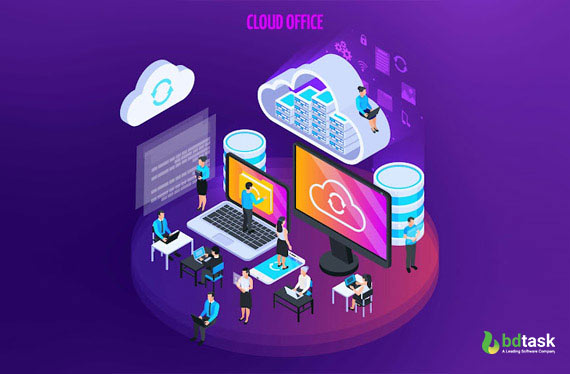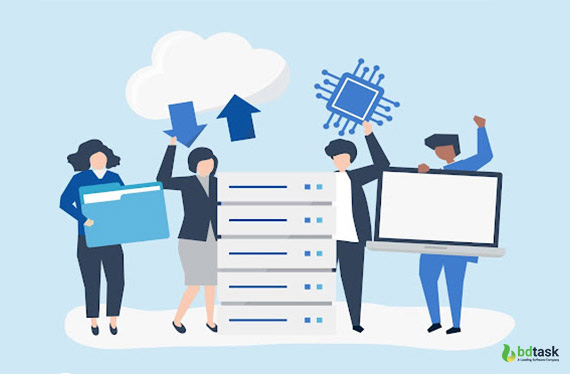Cost-Effective Cloud Solutions Online: Reduce IT Burdens

Staying ahead in today's fiercely competitive business landscape requires more than innovation; it demands a keen eye on cost-efficiency. As businesses strive to maximize profits while minimizing overhead, the allure of cloud computing has never been more potent. This article delves into the realm of cost-effective cloud solutions online, illustrating how they not only alleviate IT burdens but also serve as a catalyst for profitability.
With its promise of scalability, security, and cost-effectiveness, cloud computing has emerged as a transformative force for businesses of all sizes and industries. By migrating to the cloud, companies can unlock many benefits that were once out of reach with traditional on-premise IT infrastructure.
Understanding Your Business Needs-lets Discuss
Before diving into the cloud, closely examine your current IT setup. Traditional on-premise systems often come with a hefty price tag upfront, require ongoing maintenance by your IT team, and can be inflexible when your business needs change.
A recent Flexera study found that businesses waste an average of 35% of their IT budget on underused or unmanaged software. These limitations can hold you back from growing and innovating, making adapting to a changing market difficult.
The good news is that cloud solutions are designed to be customized. They can address the specific needs of your business, regardless of its size or industry. Whether you're in e-commerce selling clothes or in education offering online degrees for working adults, there's a cloud solution that can help you streamline operations and boost efficiency.
Cost-Effective Cloud Services
Cloud computing offers various services that can significantly reduce your IT expenses. Let's explore some of the most impactful options
Cloud Storage
Imagine ditching expensive physical servers and hard drives. Cloud storage lets you securely store your data online, with access from anywhere. This eliminates upfront costs for hardware and frees up valuable office space.
Computing Power
Forget about constantly upgrading your computers. Cloud computing offers on-demand access to powerful processing resources. You only pay for your computing power, avoiding the high cost of purchasing and maintaining in-house servers.
Collaboration Tools
Cloud-based collaboration platforms empower your teams to work together seamlessly, regardless of location. This can improve communication, reduce the need for travel, and boost overall productivity. A 2022 Frost & Sullivan study found that businesses using cloud collaboration tools see an average increase of 33% in team productivity.
Software as a Service
With SaaS, you access different software applications through the cloud instead of installing them on individual devices. This eliminates the need for software licenses, updates, and maintenance, reducing your IT burden and associated costs.
These are just a few examples. The cloud offers many cost-effective solutions to transform your IT infrastructure and free up valuable resources for core business activities.
The Pay-As-You-Go Advantage
Traditional IT often requires significant upfront investments in hardware and software licenses. This can strain your budget and limit your ability to adapt to changing needs. Cloud computing offers a different approach with its pay-as-you-go pricing model. Let's break down how this benefits your business
Reduced Upfront Costs
Unlike buying servers and software outright, cloud services allow you to avoid significant upfront expenses. You only pay for the resources you use, freeing up capital for other business priorities.
For instance, transitioning to a cloud-based ERP system can drastically reduce costs associated with hardware, software licenses, and IT staff for maintenance. This allows you to allocate those funds toward core operational expenses like marketing, product development, or employee training.
Increased Scalability
Need to ramp up processing power for a busy season? You can easily scale your resources up or down on-demand with the cloud. This eliminates the risk of overspending on unused hardware or software.
Improved Cash Flow Management
Predictable monthly bills for cloud services make it easier to manage your cash flow. You'll always know exactly how much you spend on IT, making budgeting and forecasting more straightforward.
By eliminating upfront costs and offering flexible resource scaling, the pay-as-you-go model gives your business the agility to adapt to market changes while controlling IT expenses. This translates to greater financial stability and the freedom to invest in areas that drive growth.

Cost-Effective Cloud Solutions Online-Real Benefits
Traditional on-premise IT systems can limit your employees' ability to work efficiently. Cloud-based tools and applications remove these limitations and offer several key advantages
Increased Accessibility
Employees can access work documents, applications, and data from any device with an internet connection, whether in the office, at home, or traveling. This flexibility allows for better work-life balance and improved productivity.
Improved Efficiency
Cloud solutions eliminate the need to install and update software on individual devices. This saves employees valuable time and reduces frustration caused by compatibility issues. They can focus on their core tasks instead of dealing with IT troubleshooting.
For example, cloud kitchen technology can streamline operations by managing inventory, orders, and deliveries through a centralized platform, allowing restaurant staff to concentrate on food preparation and customer service.
Improves Collaboration
Cloud-based collaboration tools enable teams to work together seamlessly, regardless of location. Features like real-time document editing, shared workspaces, and instant messaging foster better communication and teamwork.
Focus on Core Business Activities
Cloud solutions free up valuable time and resources for employees by reducing IT burdens and administrative tasks. This allows them to focus on their core business activities, leading to incredible innovation and growth.
Improve Security In The Cloud
Security is a top priority for any business considering the cloud. Let's address common concerns like malware, phishing, and other cyber threats.
Leading cloud providers like Amazon Web Services (AWS), Microsoft Azure, and Google Cloud Platform (GCP) invest heavily in state-of-the-art security. This includes features like:
- Data Encryption: Your data is scrambled at rest (stored) and in transit (being moved), making it unreadable even if intercepted.
- Access Controls: Granular control over who can access your data and what they can do with it ensures only authorized users have permission.
- Disaster Recovery: Cloud providers have robust backup and disaster recovery plans in place to ensure your data and applications remain accessible even in the event of an outage.
A 2022 IBM report revealed that 66% of security professionals believe their cloud data is more secure than on-premise data. This is likely because cloud providers have dedicated security teams and resources that most businesses simply can't match independently.
Real-World Examples of Cloud Success
Many companies across various industries have experienced significant benefits after migrating to the cloud. Here are two examples that showcase the power of cloud computing:
Shopify
Shopify, a leading e-commerce platform provider, wanted to ensure they had the best tools to handle surging customer demand. While they were already cloud-based, managing their own data centres wasn't ideal.
By migrating to a container-based cloud solution, Shopify achieved several key improvements:
- Simplified Deployments: The cloud's "immutable infrastructure" ensured consistent and reliable deployments, minimizing errors and streamlining the process.
- Enhanced Scalability: The cloud's flexibility allowed Shopify to quickly scale its resources to handle high-traffic events like flash sales, preventing disruptions for businesses like Kylie Cosmetics.
Spotify
Spotify, the popular music streaming platform, faced challenges managing its massive in-house data centres. These data centres were expensive to maintain and distracted engineers from focusing on core tasks like developing new features.
By migrating to the Google Cloud Platform (GCP), Spotify achieved several key results:
- Reduced Costs and Complexity: Moving away from in-house data centers eliminated the need for maintenance and simplified operations, saving money and resources.
- Increased Innovation: With engineers freed from data center management, Spotify could focus more on developing innovative features and improving the user experience.

Making the Move to the Cloud: A Step-by-Step Guide
Transitioning your business to the cloud can be daunting. But with a well-defined plan, you can ensure a smooth and successful migration. Here's a step-by-step guide to help you navigate the process:
1. Assessment
Before embarking on your cloud journey, it's crucial to understand your current IT landscape. This involves taking stock of your existing hardware, software, data storage needs, and any security measures in place.
Evaluating your current setup helps identify areas that can benefit most from cloud migration.
2. Planning
Once you have a clear picture of your IT environment, it's time to create a detailed migration plan. This involves choosing a reputable cloud service provider (CSP) that meets your needs and budget. Research different cloud providers and their offerings to find the best fit.
Additionally, map out the migration process for your applications and data, ensuring minimal disruption to your daily operations.
3. Implementation
With a solid plan, it's time to execute the migration. This may involve transferring data to the cloud platform, setting up cloud-based applications, and configuring security settings.
Partnering with a skilled IT team or a cloud migration specialist can ensure this stage is completed efficiently and securely.
4. Ongoing Management
Migrating to the cloud isn't a one-time event. Once you're up and running, you must monitor your cloud environment continuously. This includes tracking resource usage, optimizing costs, and ensuring ongoing data security.
Many cloud providers offer tools and services to help with this ongoing management aspect.
Endnote
The allure of cost-effective cloud solutions online cannot be overstated. By embracing the cloud, businesses can transcend the limitations of traditional IT infrastructure, unlocking unparalleled scalability, security, and profitability.
As we navigate an increasingly digital world, the cloud is a beacon of innovation, guiding businesses toward a future of efficiency and prosperity. Take the leap into the cloud today and embark on a journey towards sustainable growth and success.










